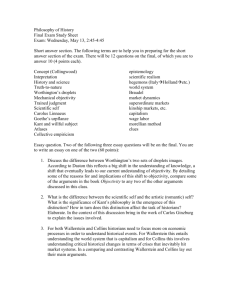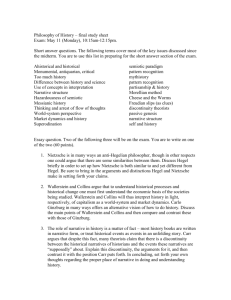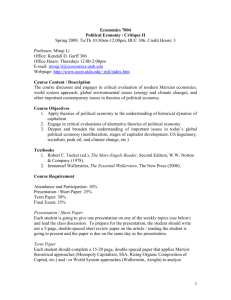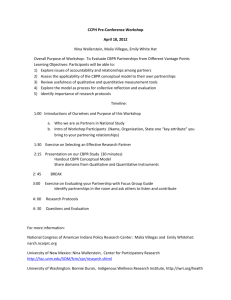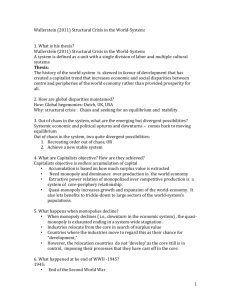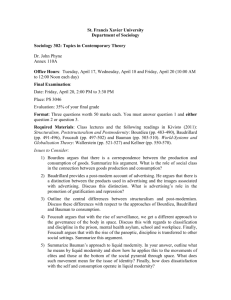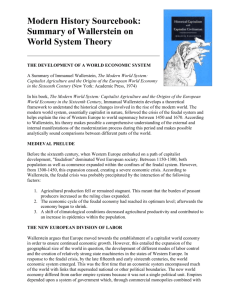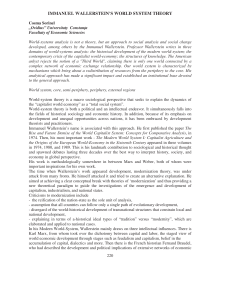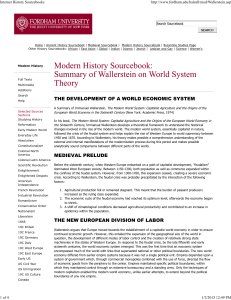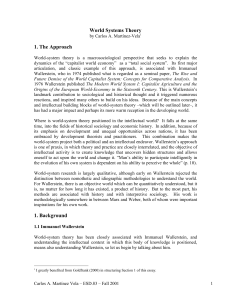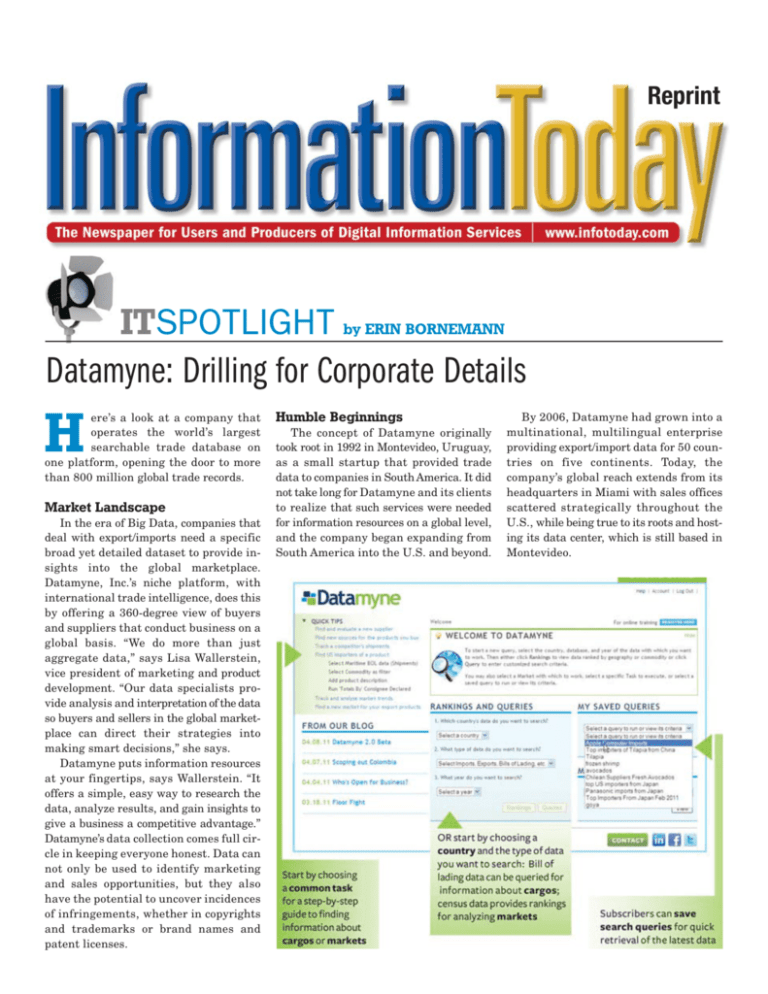
Reprint
ITSPOTLIGHT by ERIN BORNEMANN
Datamyne: Drilling for Corporate Details
H
ere’s a look at a company that
operates the world’s largest
searchable trade database on
one platform, opening the door to more
than 800 million global trade records.
Market Landscape
In the era of Big Data, companies that
deal with export/imports need a specific
broad yet detailed dataset to provide insights into the global marketplace.
Datamyne, Inc.’s niche platform, with
international trade intelligence, does this
by offering a 360-degree view of buyers
and suppliers that conduct business on a
global basis. “We do more than just
aggregate data,” says Lisa Wallerstein,
vice president of marketing and product
development. “Our data specialists provide analysis and interpretation of the data
so buyers and sellers in the global marketplace can direct their strategies into
making smart decisions,” she says.
Datamyne puts information resources
at your fingertips, says Wallerstein. “It
offers a simple, easy way to research the
data, analyze results, and gain insights to
give a business a competitive advantage.”
Datamyne’s data collection comes full circle in keeping everyone honest. Data can
not only be used to identify marketing
and sales opportunities, but they also
have the potential to uncover incidences
of infringements, whether in copyrights
and trademarks or brand names and
patent licenses.
Humble Beginnings
The concept of Datamyne originally
took root in 1992 in Montevideo, Uruguay,
as a small startup that provided trade
data to companies in South America. It did
not take long for Datamyne and its clients
to realize that such services were needed
for information resources on a global level,
and the company began expanding from
South America into the U.S. and beyond.
By 2006, Datamyne had grown into a
multinational, multilingual enterprise
providing export/import data for 50 countries on five continents. Today, the
company’s global reach extends from its
headquarters in Miami with sales offices
scattered strategically throughout the
U.S., while being true to its roots and hosting its data center, which is still based in
Montevideo.
Leading the charge is CEO Brendan
McCahill, a veteran of the maritime industry, who has a strong background in the
transportation market. He knows the
programs well, having used Datamyne
while he was at Hanjin Shipping Co. Ltd.
and Norton Lilly International, Inc. before
joining Datamyne as executive vice president in 2007. In 2009, McCahill was
appointed CEO. For McCahill, “Content is
still king,” and he is intent on getting the
accurate data to the people who benefit
from it most.
“We cover data on 68% of global exports
and 72% of global imports,” says Wallerstein, noting that the data serves a
customer base that extends into private
and public sectors alike. Trade associations, government agencies, law firms,
consultants, commercial markets, libraries
(academic and research libraries), and
more than 3,500 companies now tap into
Datamyne’s facts and figures to fulfill their
research needs and ultimately for better,
more educated decision making in the global business market.
Datamyne’s team of data professionals
in the U.S. guarantees the quality of data,
says Wallerstein. Its ISO-certified data
center adheres to strict quality control of
its data, from verifying the actual number
of shipments to identifying the names and
addresses of export/import companies to
match D&B records. This data provides
competitive intelligence that companies
need to expand their businesses across
borders or to strengthen their supply
chains by finding alternate sources and resources. “Companies can see new markets,
see where the markets are growing or
contracting, and see who is buying and
selling specific products,” says Wallerstein.
A simple and easy-to-use platform, combined with an impressive amount of global
data, makes Datamyne the ideal system for
those interested in global trade markets.
“The value we bring is in the standardization of the data and the ability to access
this data on one platform,” says Wallerstein. “Our platform makes it very easy to
research the global market trees and see
what goods each country is trading.”
Technological Trends
Drag-and-drop applications let users
analyze large amounts of data quickly and
examine emerging market trends while
calculating their competitive strategies.
The database is updated daily, and its
information is delivered to customers
within 24 hours of receipt from U.S. Customs and Border Protection.
Trade Profiles, one of Datamyne’s
newest products, summarizes 12 months
of trade activity to give users information
on potential trade partners. The objective,
says Wallerstein, is to provide a global
view of all the buyers and sellers so they
can find partners at various points along
the supply chain.
“We have our data on a platform that
provides a multidimensional view of
trade,” says Wallerstein. Customers can
examine data from various angles. First,
Datamyne’s ranking system offers a
macroeconomic view of trade trends via a
view from the top; users can increasingly
zoom in, starting from a country’s categories of exports to individual products to
actual players. Using public data, including bills of lading data, shipping
manifests, census data, official filings,
and other data, customers can search for
results on specific exports by country,
products, or players. For example, a
search on fresh flowers during a specific
time period gives a searcher key reference
points: the countries of origin, a list of
suppliers, shippers from that country,
their customers, and their sales rankings.
Five-Year Plan
Customers can clearly see the benefits
of what Datamyne’s data delivers in
terms of size, speed, simplicity, service,
and market strategy, says Wallerstein.
“Datamyne has grown about 50% in the
past 3 years,” she says, noting that there
are more services in the works, including
expanding the breadth and scope of
coverage and creating mobile apps,
which are expected to be released by
3Q 2013.
“Within 5 years, we want to perfect our
global tableau,” says Wallerstein. “We
want to make it easier for companies to
connect the dots between markets and
players.”
This article is reprinted from the April 2013 issue of Information Today, published by Information Today, Inc. Used with permission. All rights reserved. Individuals
may download, store, and print a single copy. All commercial uses, including making printed copies for distribution in bulk at trade shows or
in marketing campaigns and all commercial reprints require additional permission from the publisher. www.infotoday.com

